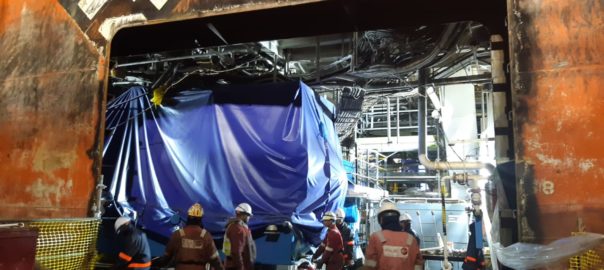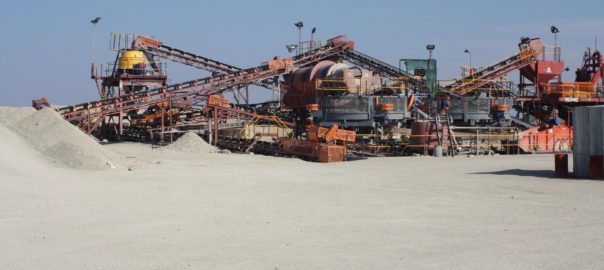The priority at the top of the list of every diamond producer is to maximise diamond recovery, while optimising costs as well as acting on the growing pressure to address corporate social responsibility and environmental issues. This is where TOMRA Mining says it can help.
TOMRA’s holistic approach and cutting-edge technologies have proven to deliver consistently exceptional recovery rates, significant cost savings, operational advantages and a smaller environmental footprint, the company says. In particular, its complete diamond recovery solution is attracting fast-growing interest of diamond producers of all sizes – from large-scale operations to small mines – from different parts of the world. TOMRA is receiving increasing enquiries from existing and new customers, looking to update their plant or complete the process with TOMRA’s revolutionary Final Recovery sorter.
A key element of TOMRA’s full solution is the COM XRT 300 /FR Final Recovery sorter, which the company has been demonstrating at its Demo Rooms in Wedel, Germany, and Johannesburg, South Africa. These demonstration facilities are proving particularly valuable for diamond operators, who have the opportunity to experience first-hand the unique benefits of this revolutionary and easy-to-operate compact final recovery sorter, the company says. They can watch accurate demonstrations of typical final recovery, sort house and single particle sorting functions, across various size fractions with either kimberlite or alluvial ore, and experience sorter outputs at various feed rates exhibiting actual on-mine conditions. The TOMRA operator can show them how their unique operational requirements would be addressed on a live easy-to-use HMI (Human Machine Interface) panel.
“The biggest advantage of these demonstrations is that the customer experiences the extremely low yield – that is the ultra-high diamond-by-weight concentrate – delivered by the sorter,” Corné de Jager, Diamond Segment Manager TOMRA Mining, says. “This in turn highlights the significant downstream benefits with regards to hand sorting and security. What’s even more impressive for them to see is the exceptionally low amount of gangue ejected with the diamond concentrate, even for the difficult-to-sort ultra-fine size fractions.”
TOMRA has also demonstrated the COM XRT 300 /FR sorter at the Electra Mining Show 2022, performing simulated operational production runs for the entire duration of the exhibition. The sorter was fed with fine alluvial ore, which had diamond dust tracers and diamonds added.
“This realistic and live operation drew a never-ending stream on show goers,” de Jager says. “The live demo show has resulted in numerous enquiries and sales. In fact, a ‘hands-on’ CEO of a large diamond operation had lengthy discussions with the TOMRA team on site. In front of the crowd, he asked us to process 1 kg of alluvial gravel and to include 150 diamond tracers and 10 diamonds. The sorter delivered a perfect result, ejecting all 160 added tracers and diamonds, with minimal ore particles. The crowd cheered, while the CEO shook hands with our TOMRA design specialist.”

TOMRA’s complete partnered diamond recovery solution
TOMRA says it is the only manufacturer to offer a complete Partnered Diamond Recovery Ecosystem – a full recovery service from 2-100 mm with a flowsheet covering the entire process – from high-capacity Concentration (+4-100 mm) to Final Recovery and Sort House applications (+2-32 mm). It includes a detailed analysis of the diamond producer’s requirements and operational needs, the collaborative development of an X-Ray Transmission (XRT) technology-based flowsheet, all the way to installation. After commissioning, TOMRA remains at the side of the diamond producer, to provide on-site and advanced remote support with specialized services and training. The complete solution can also include secure cloud computing benefits of the optional web-based TOMRA Insight service, that offers onlineand near real time performance metrics of all the sorters.
TOMRA is today, it says, the world’s leading supplier of XRT diamond recovery technology, having recovered some of the largest and rarest gemstones in history. The extremely precise detection and ejection of even the smaller particle sizes, proprietary image processing and large capacity of TOMRA’s XRT sorters deliver exceptionally high concentration factors and recovery rates in high tonnage diamond concentration applications. In fact, its promise to customers is simple: 100% detection in the specified size range, irrespective of luminescence profile or coating, and a guaranteed diamond recovery greater than 98%. This consistent performance has allowed diamond mines to revolutionise the entire process plant design.
In Final Recovery, the performance of TOMRA’s XRT proprietary ultra-high resolution sensor and precise ejection technology has revolutionised this stage of the process to efficiently deliver recovery rates greater than 99% along with an ultra-high diamond-by-weight concentrate with yields as low as 0.05%. This in turn has created a unique proposition for the significant reduction of traditional hand sorting, with higher capacities than existing single particle sorters.









